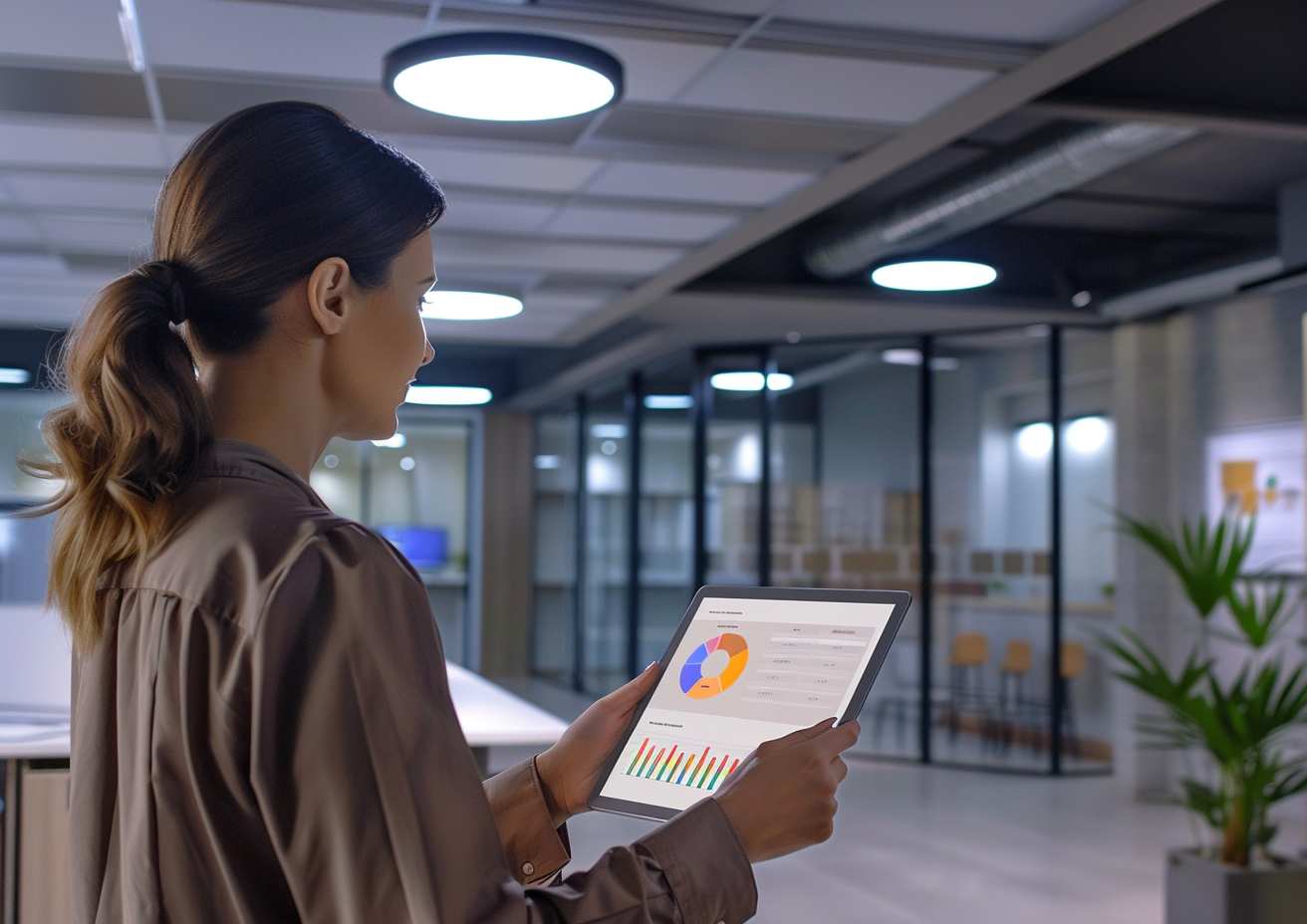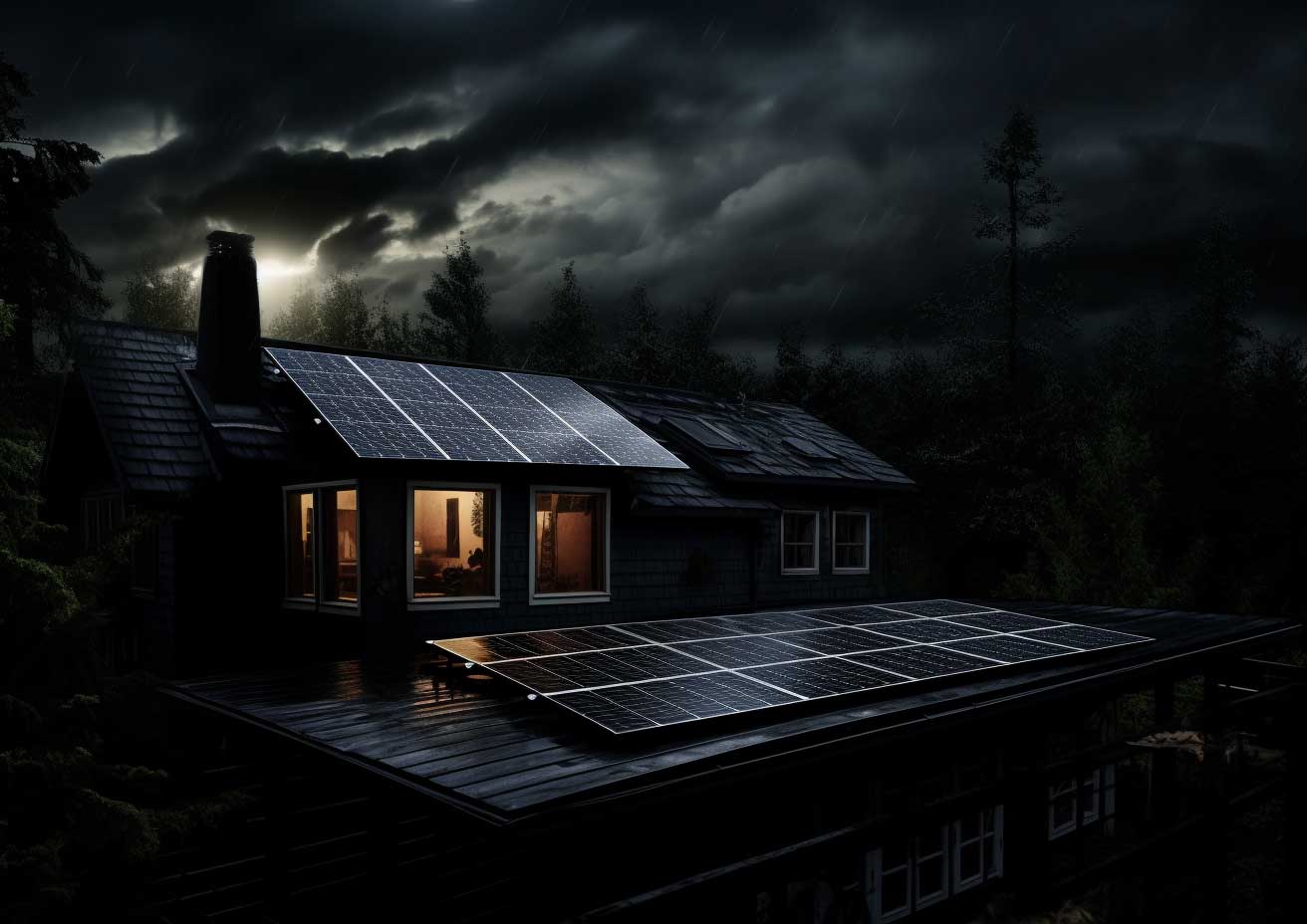Can germicidal UV light fixtures protect your facility against viruses? Although germicidal UV technology has been in existence for decades it most recently has gained renewed interest due to the COVID-19 pandemic. Coronavirus has changed how businesses operate. The health and safety of employees and customers are now one of, if not the top priority, for most facilities in the nation.
What is the economic impact of COVID-19 for businesses?
According to the U.S. Centers for Disease Control and Prevention (CDC), the average business loses $1,685 annually per employee due to absenteeism related to illness and work injuries. Add to this the fact that the typical U.S. office building has an average of 151 square feet per person. This means the average business is losing $11.23 per square foot annually from illness. Keep in mind, all these figures are pre-COVID-19 numbers, which means the cost has undoubtedly increased.
What is the history of germicidal UV light fixtures?
Germicidal UVC light has been used for decades for its proven ability to attack viruses, germs, bacteria, fungus and mold spores on surfaces and in the air. Healthcare facilities and medical laboratories were the first major industries to adopt germicidal lighting technology to disinfect sterile environments and to prevent hospital-acquired infections – a major concern for hospitals.
The first germicidal lights were fluorescent and now with the expansion of LEDs, are found mostly in LED type housings.
The popularity of the technology has grown due to its effectiveness. It gained traction in other industries including water treatment facilities and continues to grow into other industries like schools and manufacturing facilities, especially post-COVID-19.
What is germicidal UV light?
To properly explain the germicidal properties of ultraviolet light, we have to begin by looking at the light spectrum. The visible light spectrum is the part of the spectrum that is visible to the human eye, while those that cannot be seen are in the infrared and ultraviolet ranges. The visible spectrum of light has longer wavelengths than ultraviolet light. There are four wavelengths of light in the UV spectrum, including Vacuum UV, Short Wave UV or UV-C, Middle-UV or UV-B, and then Long-wave UV or UV-A. UV-A is associated with skin aging, so extended periods of exposure are harmful to humans. UV-B wavelengths cause sunburn. Extended exposure to UV-A and UV-B wavelengths has been found to increase the risk of skin cancer. UV-C wavelengths are the shortest of the three and are the least harmful. They also have the most effective germicidal properties of the three wavelengths.
Is a UV light the same as a black light?
Black light is a type of UV light. Black light emits UV-A wavelengths. On the other hand, germicidal ultraviolet products emit UVC light.
What microorganisms are inactivated by germicidal UV light?
UVC light has been proven through multiple lab tests and studies to eradicate Tuberculosis, Influenza, SARS, Measles, Adenovirus, Smallpox, Anthrax, Glanders, the Pneumonic Plague, mold, mildew, and spores, among dozens of other bacteria and infections.
How does UV (ultraviolet) light kill bacteria? Viruses?
UVC light attacks the RNA and DNA of bacteria and viruses, which stops them from replicating. DNA and RNA are the genetic material that makes up all living organisms. Bacteria and viruses need other cell structures in order to reproduce. Germicidal UV C lighting causes the inactivation of microbes and cell death, which stops them from replicating and effectively kills them. LG has done thorough research on the efficacy of UVC light through lab tests. In their tests researchers would compare the difference between a fluorescent UV lamp and a UV LED lamp in their abilities to kill mold. As you can imagine, the UV LED lamp was much more effective than the fluorescent UV lamp. In a series of UVC disinfection tests, scientists tested the exposure time and concentration of UVC light used in killing different types of bacteria in water and on surfaces. The big issue here is intensity. This is one of the biggest misconceptions about UVC light. People don’t understand the intensity and exposure time needed for the application they want to use UVC for. So whether you are shopping for a wand on Amazon or, on a much bigger scale, something for your facility, it has to be planned out depending on your space size and what you are trying to accomplish in the space.
Does UV light inactivate COVID-19? How long does COVID-19 survive in UV light?
In the early stages of the pandemic, some credible organizations came out and said UVC light could kill COVID-19, but have since retracted their statements in fear of making the announcement too soon. While studies are still being done on the ability of UVC light to kill COVID-19 – lab tests like these take time – germicidal ultraviolet light has been proven to be effective at inactivating other Coronaviruses, including the virus commonly known as the Bird Flu. The FDA says UVC light may also be effective in inactivating COVID-19, but at this time the organization has limited data on the wavelength, dose, and duration of the UVC light radiation required to inactive COVID-19.
Does 405 nm light kill viruses?
Another type of light that has been getting a lot of buzz during the pandemic is 405-nanometer non-UV light. Having a longer wavelength outside of the UV range, it is safe for human exposure. Studies and lab tests have found 405 nm light can definitely kill bacteria and germs. Its ability to inactivate viruses is inconclusive. One study found 405 nm light has the potential to inactivate viruses if singlet oxygen enhancers are present. Overall, the science community would agree 405 nm is a wavelength that is completely safe for human exposure (unlike UVC light) and it can eradicate bacteria, but not viruses.
How does 405 nm kill bacteria?
405 nm lights excite toxic molecules called Reactive Oxygen Species or ROS. ROS is a type of unstable molecule that contains oxygen and easily reacts with other molecules in a cell. A build-up of ROS in cells produces an effect that is similar to those that occur when using bleach. Bacteria is inactivated, preventing it from re-populating the surface that it’s on or traveling to further surfaces or hosts. ROS are specific to bacteria and are not found in humans, animals, and plants. That’s why this wavelength is so safe for humans.
What is the between 405 nm light and UVC light?
405 nanometer light is safe for human exposure, UVC is not. UVC light can damage the eye and cause a flash burn. 405 nm provides continuous disinfection, while UV-C provides episodic disinfection. UVC completely kills viruses whenever you run an ultraviolet disinfection device, say at night when people have left for the day, while 405 nm provides a much slower, but continuous disinfection that can be run all day since it is safe for human exposure. Again, keep in mind, UVC kills viruses and bacteria, while 405 nm has only been proven to eradicate bacteria. 405 nm light works on a much slower molecular process than UVC. In lab tests with 405 nm light, it took 16 hours to kill Staph and E. Coli under lab conditions. On the other hand, it would take seconds for UVC light to do the same. In a study done by Vital Vio, a 405 nm product retailer, 405 nm lights were installed in an active trauma room. The lights were left on 24 hours non-stop. It took 110 days to get bacteria colony counts down to zero. Other differences between the two:
- UVC has proven research behind it, while 405 nm is a relatively new technology and has mostly just been used in hospitals. Recently, 405 nm use is growing in other industries like schools and food processing, especially during this time.
- UVC is not safe to run around humans. UVC can damage the eye cornea. You do not want to run UV germicidal devices around your facilities during the workday, given the risk of your employees looking up at the lights and damaging their eyes. 405-nanometer wavelengths do not pose a risk to humans and these lights are safe to run with humans around.
- UVC light significantly degrades the quality of many different types of materials, such as plastics, making them brittle or yellow and subject to cracking and failure. 405 nm light does not degrade materials.
- When it comes to using the lights in your facility, you can only run UVC systems when a room isn’t occupied, but you can have 405-nanometer lights on when people are in the room.
What is far-UV light?
Far-UV light has a shorter wavelength making it safe for human exposure. Early tests show far-UV light can inactivate airborne pathogens, but cannot penetrate the outer layer of human skin. As of right now, there are some early products being developed, but we wouldn’t recommend far-UV products until more testing is done, it’s just not conclusive enough for us to say these products definitely work when it comes to germicidal properties.
What type of germicidal UV light fixtures are available? What about 405 nm light products?
There are three main types of fixtures or devices on the market equipped with UVC and 405 nm technology. There are the independent ones, which run UVC light constantly, like on an HVAC system. UVC lights are attached to an HVAC system and keep mold and bacteria out of a building’s airstream. Then there are the blended products that can run germicidal light or normal LED light manually or automatically with an occupancy sensor. All 405-nanometer lights fall under this category since they have to be running all the time to be effective in killing pathogens. 405 nm lights will change between running regular white light paired with 405 nm light when people are in the room, then just the germicidal light when people are gone for the day. This allows for custom disinfection schedules.
There are mobile units that come on wheels and tripods. These are usually used in hospitals but have now expanded into more and more industries. Cleaning crews take one of the units into a room, make sure no one is in the room, close the door and let it run for a few minutes and then once it’s done disinfecting, they move the device into the next room. Then there are air filtration units that feature UV disinfection with air filters. For example, there is a retrofit troffer product that pulls in a room’s air, takes it through an activated carbon and HEPA filter, and then runs that air through UVA and C lights before it is repopulated into space. This keeps pathogens from falling on and contaminating surfaces.
How can I use UVC lights or 405 nm lights in my facility?
Deciding which product works best for your facility depends on what your goals are and what kind of environment the light will be in. Do you want to get rid of germs? Viruses, bacteria, or both? Will the light be in a high-traffic area or a low-traffic area? We can be your guide and help you mitigate COVID-19 risk from your building. Please feel free to reach out to us so we can help or call us: (800) 834-8737.




